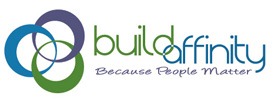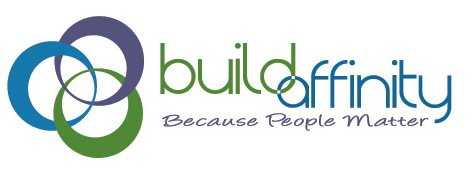Affinity: the connection between and among people, based on common experiences, passions, and interests. The ability to discover and develop those connections is the key to successful relationship building.
________________
“Make sure each EITC client signs the 8879 and that all your volunteers have their Pub 17 handy,” said the IRS trainer for the Volunteer Income Tax Assistance (VITA) program.
One of my roles when I worked at a community action agency was to oversee its tax assistance program. I dutifully sat in the 4-hour training session the IRS offered in Milwaukee, WI for site coordinators. The 8879s and Pub 17s that would later become a normal part of my vocabulary were meaningless to me as I sat in the training with my eyes glazing over. Every part of the curriculum was laced with unidentified acronyms and codes, all Greek to me . . . actually Greek would have been easier.
Not only did I feel like I did not belong in this group of seasoned tax site coordinators, I did not WANT to belong to the group. With each acronym and document number, I drifted farther away. My attempts to get the trainer to put things in “beginner” terms failed. The two other newbies in the group and I were left floundering.
What would have made the difference for me?
The trainer would have accomplished three things by talking in “layman’s terms” instead of IRS-speak:
- Everyone in the room would have been on “the same page.” Beginners and veterans alike would have known exactly to which forms and publications the trainer referred.
- The newbies would have felt acknowledged. By saying, “At your tax sites, be sure that each volunteer has this publication called Your Federal Income Tax, or as we refer to it: Pub 17,the bible” people new to the group would not only have understood the requirement but would have appreciated the recognition that they don’t need to know all the IRS-speak yet.
- An affinity would have been created as everyone was reminded of the challenges of climbing a learning curve. There was a time when, even the seasoned tax preparer didn’t know a Publication 17 from a Publication 29. By using both the “real” name of the products/services, both the veterans and the newbies would have been comfortable and engaged in the training.
How often do you assume that every member of your audience knows what you mean when you use acronyms, abbreviations, or figures of speech?
What does ERA mean/stand for in the sentence below?
|
The new ERA impressed everyone. |
Is it Equal Rights Amendment? Earned Run Average? A laundry detergent? A distinct period of history? Without context, it’s hard to tell. When in doubt, spell it out!
People are often too proud, embarrassed, or shy to ask for clarification when they don’t understand something. In a room full of physicians, for example, how many will raise their hand and ask the speaker, “What does RHR” stand for? Even a doctor may not be immediately familiar with the shorthand for “Resting Heart Rate.”
I challenge you to review your training slides and presentation notes through the lens of the person in your audience who has the least experience with your topic. Sure, if your audience will be football players and sports writers, then, by all means, use “QB, Pick 6, etc.” But, if you’re speaking to a service club or group of business people, you can’t assume that everyone in the audience is a football fan who automatically knows the terminology (shocking, I know, but there may even be a couple Wisconsinites who have never seen a Packers game).
Don’t cause anyone in your audiences to feel confused and alienated like I did during my IRS training. Build affinity by letting EVERYONE in your audience in on your secrets. Bottom line: DAPKWYM (Don’t assume people know what you mean).
Building affinity,
Betsy


